The Ultimate Guide to Choosing the Perfect Pearl Jewelry

Pearls are a piece of timeless and versatile jewelry. Pearls complement anyone's jewelry wardrobe, whether worn for personal use or given as gifts. They may also lend a touch of sophistication and elegance to any ensemble. However, buying pearls can be overwhelming, as there are many different types, sizes, and qualities to choose from. This article about buying pearls can help you make informed decisions.
Personal Style
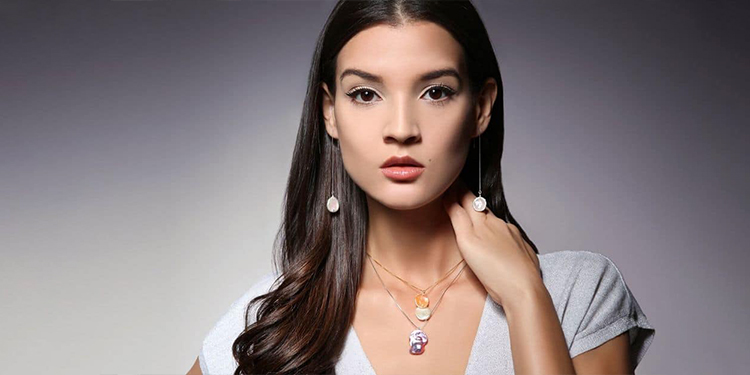
When choosing pearl jewelry, it's essential to consider your style and preferences. Whether you prefer a more traditional, classic look or are drawn to contemporary and unconventional techniques, there's a type of pearl jewelry to suit your taste.
For those who prefer a classic look, traditional pearls such as a simple strand of pearls, stud earrings, or a pearl pendant necklace are timeless choices that never go out of style. If you're drawn to contemporary styles, you may prefer more unconventional designs, such as multi-strand necklaces, asymmetrical pearls, or pearls paired with other gemstones.
You can also choose pearl jewelry based on the occasion or event for which you will be wearing it. For example, if you're looking for jewelry for a formal event, a classic pearl necklace and earring set is a timeless choice. On the other hand, a simple pearl pendant necklace or stud earrings may be a better fit if you're looking for everyday wear.
Ultimately, choosing pearl jewelry is personal and individual, and it's important to select pieces that align with your unique style and taste. This will ensure that you love and enjoy wearing your pearl jewelry for years.
Pearl Type
Take the time to educate yourself on different pearls, such as Akoya, Tahitian, South Sea, and freshwater pearls. Consider the type of pearl that best fits your style and budget.
Akoya Pearls
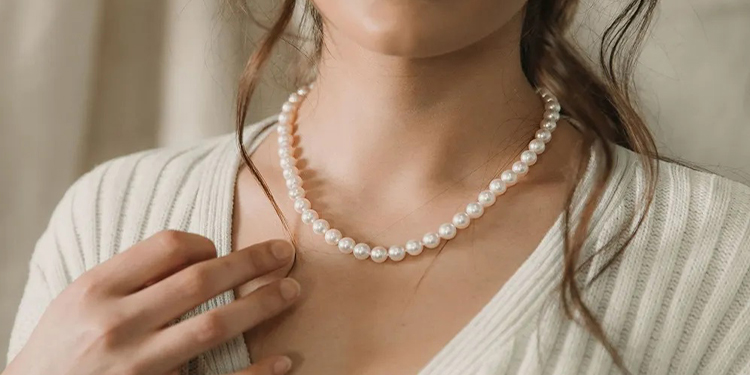
Akoya pearls are known for their round shape, high luster, and classic white color. They are typically smaller and generally more affordable than other types of pearls.
Tahitian Pearls
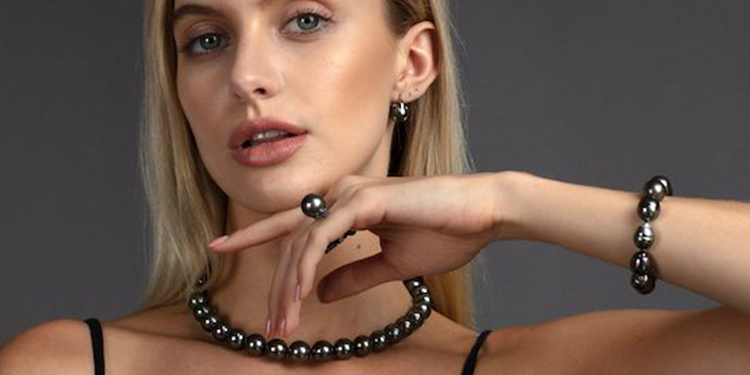
Tahitian pearls are larger and come in various dark, rich colors, including black, green, and grey. They are more expensive than Akoya pearls but offer a unique and exotic look.
South Sea Pearls

South Sea pearls are the largest and rare of all and are typically found in the waters surrounding Australia, Indonesia, and the Philippines. They are prized for their large size, creamy white or golden color, and high luster.
Freshwater Pearls
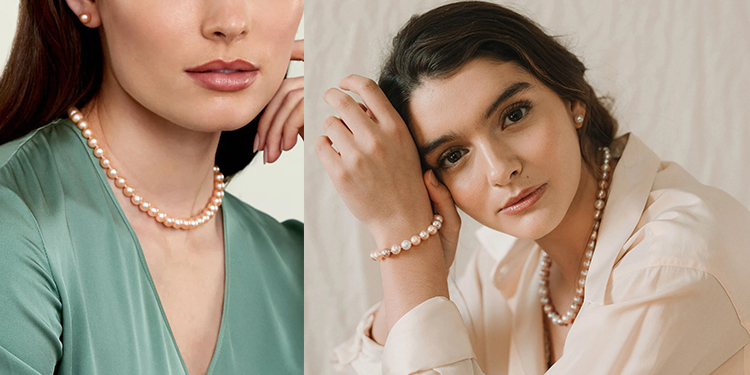
Freshwater pearls are often more irregular in shape but come in various colors and sizes. They are typically more affordable than Akoya or South Sea pearls, making them a popular choice for those on a budget.
By considering the type of pearl that best fits your style and budget, you can find a piece of pearl jewelry that you'll love and that will last a lifetime.
Some other types of pearls include Mabe pearls, blister pearls grown on the inside of the mollusk shell, and Keshi pearls, small, irregularly shaped pearls that are a byproduct of the culturing process for other types of pearls. There are also natural pearls, which are formed without human intervention and are extremely rare and valuable.
Size
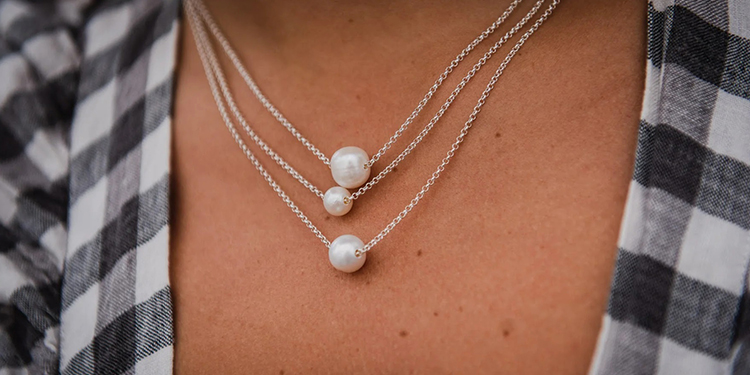
Consider the size you want for the type of jewelry you buy. Pearls range in size from 2mm to 20mm. The pearl's size can significantly impact its price, with larger pearls typically being more expensive. Additionally, the size of the pearl should also be considered in relation to the type of jewelry you're buying.
Akoya pearls are typically small, ranging from 2mm to 10mm. Tahitian pearls are larger, with an average size of 9mm to 16mm. South Sea pearls are the largest of all pearl types, ranging from 9mm to 20mm or more. Freshwater pearls can range from 2mm to 14mm, with an average size of 6mm to 8mm.
Remember that these are general guidelines, and the size of pearls can vary within each type. It's always best to see the pearls in person to determine their size and make an informed decision.
Small pearls are often more affordable and popular for those who prefer a more understated look. They can be used in delicate and dainty jewelry designs, such as stud earrings or necklaces.
Large pearls are often more expensive but offer a bold and statement-making look. They are often used in more dramatic jewelry designs, such as statement necklaces or chandelier earrings.
Consider the size of the pearl that fits your preference and budget when making your selection. South Sea and Tahitian pearls are often more expensive than Akoya or freshwater pearls, due to their larger size and unique colors of the pearls. Whether you prefer small and delicate or large and bold, there is a size of pearl that will fit your style and needs.
Shape
In addition to the type of pearl, you'll also want to consider the shape of the pearl when buying pearl jewelry. Pearls come in various shapes, including round, oval, baroque, and more.
Round Pearls
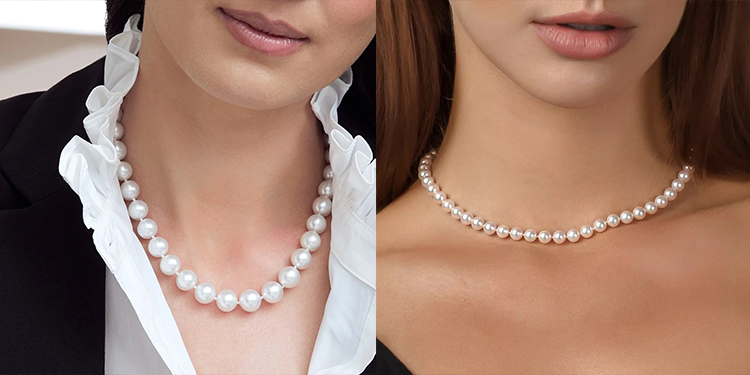
Round pearls are considered the most classic and traditional shape and are often sought after for their symmetry and uniformity.
Oval Pearls
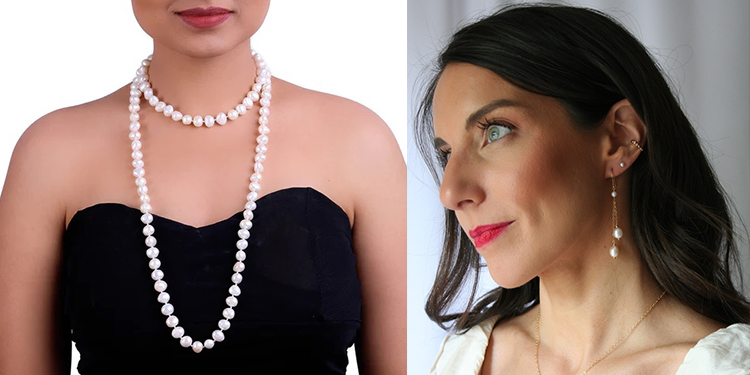
Oval pearls are similar to round pearls but offer a slightly different look. They are popular for those who want a more distinctive or unique look.
Baroque Pearls

Baroque pearls are a type of freshwater pearl that is characterized by their irregular shapes and unique textures. They offer a more natural and organic look and are often used to create bold, eye-catching pieces.
Other Shapes

In addition to round, oval, and baroque pearls, there are a variety of other pearl shapes available, including button, drop, and more. Consider the shape of the pearl that appeals to you and fits your style when selecting.
By considering both the type and shape of the pearl, you can choose a piece of pearl jewelry that reflects your style and preferences and that you'll love wearing for years to come.
Color
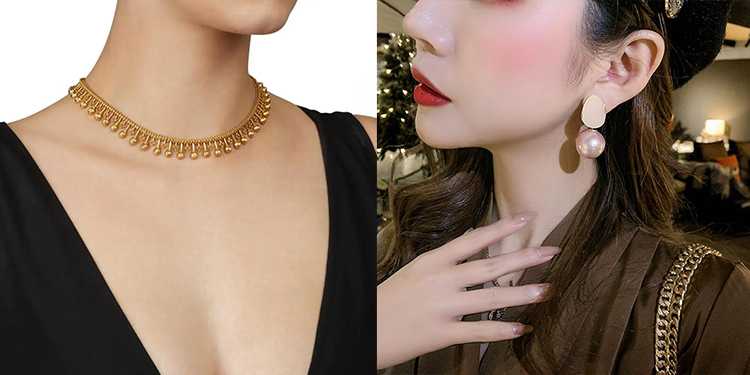
Pearls come in various colors, including white, cream, silver, golden, and more. Consider the color of the pearl that best complements your skin tone and personal style.
Pearls vary in color affecting the price

Akoya pearls are primarily white or cream-colored, with hints of rose, silver, or green. Tahitian pearls are known for their unique colors, ranging from black to gray, green, blue, and purple. South Sea pearls can have a range of colors, including white, cream, golden, and silver. Freshwater pearls come in a variety of colors, including white, cream, pink, lavender, and more.
The color of the pearl can also affect its price, with rarer colors commanding a higher price point. Choose a color that appeals to you and complements your skin tone for a truly stunning and personalized piece of pearl jewelry.
Pearl color coordination with complexion
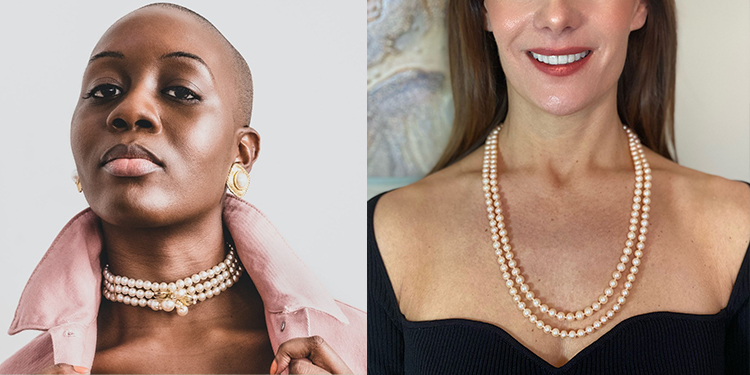
For fair skin tones, it is best to choose pearls with a pink or rosé overtone. These colors bring out the natural pink tones in fair skin and provide a soft, delicate contrast. White and cream-colored pearls are also great options for those with fair skin, as they are versatile and easy to match with any outfit.
A warm yellow or golden overtone works well for those with olive skin tones. These colors complement the warm undertones of olive skin and add a touch of glow. Chocolate and peacock-colored pearls are also excellent choices, as they bring out the richness in olive skin tones.
Dark skin tones can handle bold and vibrant pearl colors such as black, green, and aubergine. These colors contrast against dark skin and can make for a statement piece.
Remember that personal style and preference also play a significant role in choosing the right pearl jewelry for your skin tone. Choose a color and type of pearl you love and feel confident wearing.
Luster

Luster refers to the shine and brightness of the pearl. Look for pearls with a high luster, which indicate that the pearl has been well-formed and has a strong nacre layer.
High Luster
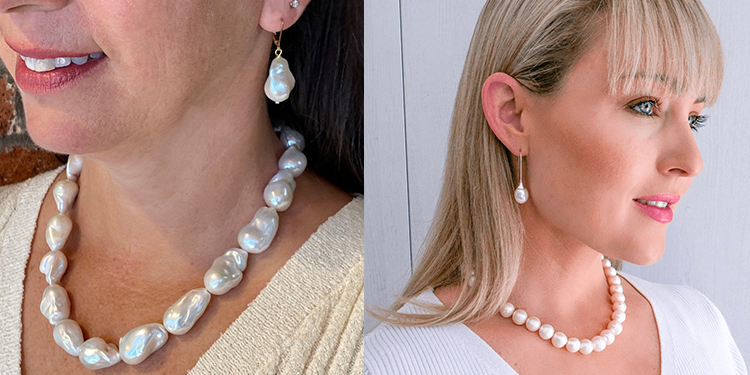
High-luster pearls have a strong, bright shine that gives them a lustrous and radiant appearance. This is a sign that the pearl has been well-formed and has a strong nacre layer, which gives it its shine and durability.
Low Luster
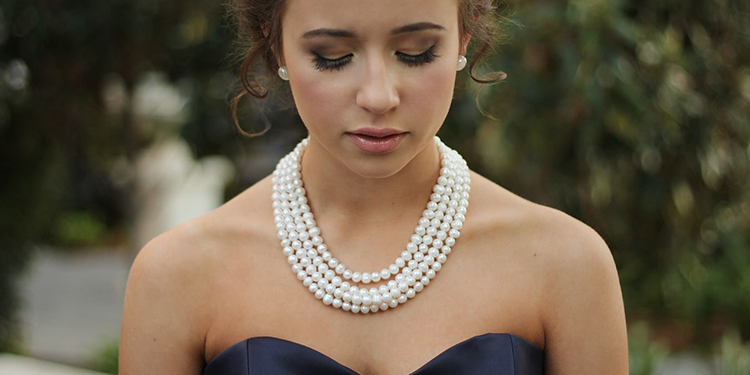
Low-luster pearls have a dull or lackluster appearance and are often less expensive than high-luster pearls. This can indicate that the pearl has a weaker nacre layer or was not well-formed.
Luster is an essential factor to consider when choosing pearl jewelry, as it directly affects the overall look and quality of the pearl. You can buy jewelry that is stunning, long-lasting, and of excellent quality by looking for pearls with high luster.
Surface Quality

The surface quality of pearl jewelry refers to the absence of blemishes and imperfections on the surface of the pearls. A high-quality surface means that the pearls have a smooth and even appearance, which enhances their overall beauty and value.
To evaluate the surface quality of pearl jewelry, scrutinize each pearl, looking for any visible cracks, pits, or discoloration. When assessing the surface of a pearl, it's also essential to consider the type of pearl. This is because different kinds of pearls, such as saltwater and freshwater pearls, can have distinct characteristics in terms of their surface quality and appearance. Saltwater pearls, for example, tend to have a smoother and more lustrous surface, while freshwater pearls may have a slightly rougher or irregular surface. Taking the type of pearl into account can give a more complete and accurate evaluation of its surface quality.
A high-quality pearl will have a deep, mirror-like luster that reflects light in a beautiful and captivating way. This is because the pearl's thicker and more reflective nacre coating gives it a radiant shine. In contrast, lower quality pearls may have a dull or lackluster appearance, with a thin nacre coating that reflects light less effectively. This can make the pearl appear lifeless and unappealing. So, luster is a critical aspect to consider when evaluating the quality of a pearl.
When buying pearl jewelry, it's important to consider both the pearls' surface quality and the setting's craftsmanship. A well-crafted set can enhance the pearls' beauty and protect them from damage, making the piece more valuable and longer-lasting.
Matching
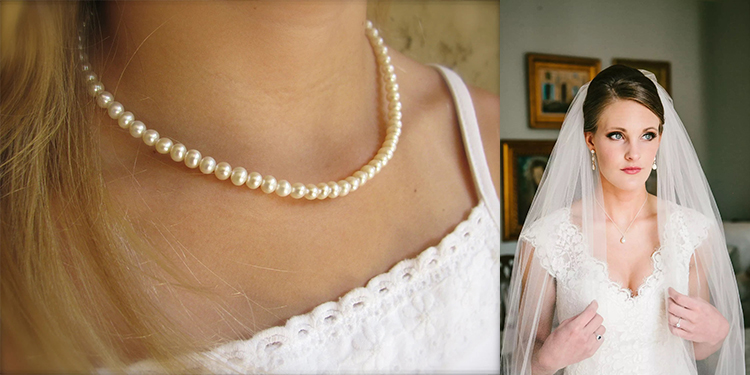
The matching of pearls is a crucial aspect when buying pearl jewelry, especially for sets like necklaces or earrings. Ideally, the pearls in a set should be as close as possible in size, shape, color, and luster, creating a harmonious and cohesive look.
Some manufacturers may use a variety of pearls in one set to create a unique look, but this can also make the set look mismatched and detract from its overall beauty.
It's also important to consider the uniformity of the pearls in a set when making your purchase. For example, if you're buying a pearl necklace, make sure that the pearls are evenly spaced and have a consistent size and shape along the entire length of the necklace.
By taking the time to consider the matching and uniformity of the pearls, you can ensure that you're investing in a beautiful and valuable piece of pearl jewelry that you'll enjoy for years to come.
Quality of Metal
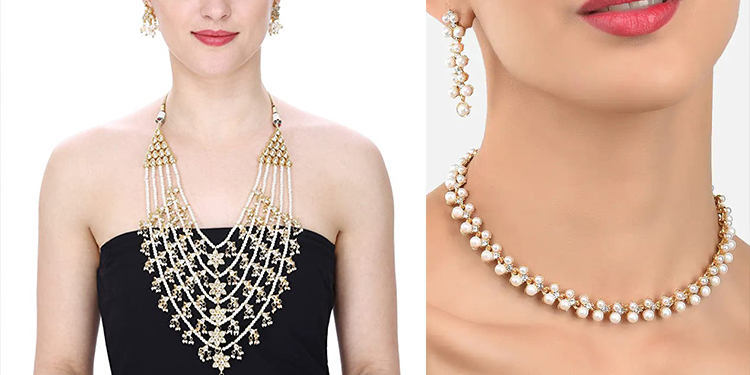
The metal used in the setting or clasp of the pearl jewelry is also important. Look for jewelry made of high-quality metals, such as 14K or 18K gold, platinum, or sterling silver, as these metals are less likely to tarnish or discolor over time.
The metal used in the setting or clasp of the pearl jewelry can also affect the overall appearance and durability. Consider your preference for metal type and color, and choose a metal that will complement the pearls and your skin tone.
Be mindful of the metal's care and maintenance requirements, as some metals may require special cleaning or polishing to keep their shine.
It's also a good idea to check the quality of the metal, such as the metal's weight and thickness, to ensure that the jewelry is sturdy and will not break or bend easily.
In addition, consider the design of the setting or clasp and how it will affect the look and security of the pearls. A simple, classic setting can showcase the beauty of the pearls, while a more elaborate set can add a touch of style and glamour.
When shopping for pearl jewelry, keep these factors in mind, and take your time to find the perfect piece that fits your style, skin tone, and budget. With the right pearl jewelry, you can add a touch of elegance and sophistication to any outfit.
Price

While pearls can range in price from a few dollars to several thousand, be mindful of prices that seem too good to be true. High-quality pearls typically have a higher price point, so be wary of prices that are significantly lower than the market average.
Pearl jewelry prices can vary greatly depending on factors such as the type of pearl, size, shape, luster, surface quality, color, and the metal used in the setting or clasp. High-quality pearls like Akoya, South Sea, and Tahitian pearls typically have a higher price point than freshwater pearls. Large, perfectly round pearls with high luster and a smooth surface will also command a higher price. Additionally, the brand or retailer, as well as the design of the jewelry, can also impact the price. When shopping for pearl jewelry, it's important to find the best combination of quality, design, and value by researching and comparing prices from different sources.
When buying pearl jewelry, be mindful of the price. While you don't want to sacrifice quality for the price, remember that high prices don't always equate to high quality. Do your research and shop for the best quality, design, and value combination.
Customer Service

When buying pearl jewelry, it is important to pay attention to the merchant's customer service policies, which may include:
Returns: You should understand the store's return policy, including the time frame for returns and whether they offer a full refund, store credit, or exchange.
Warranty: Many pearl jewelry items have a warranty covering damages or repairs. Make sure you understand the length of the warranty and what it covers.
Maintenance and Cleaning: Some merchants may offer care and cleaning services for pearl jewelry. Please find out about the cost and frequency of these services and what they entail.
Repairs: If your pearl jewelry needs repairs, it's important to know whether the store offers repair services and what the cost will be.
Certification: If you're purchasing a high-end pearl jewelry item, ask about certification, which verifies the jewelry's authenticity and quality.
Insurance: If you're buying a valuable piece of pearl jewelry, consider insuring it. Ask about insurance options and the cost of coverage.
Customer Support: It's important to have access to a reliable customer support team if you have any questions or concerns about your purchase. Find out about the availability and responsiveness of the merchant's customer support team.
By paying attention to these customer service policies, you can ensure that you have a positive purchasing experience and can get the support you need if you have any issues with your pearl jewelry.
Trends
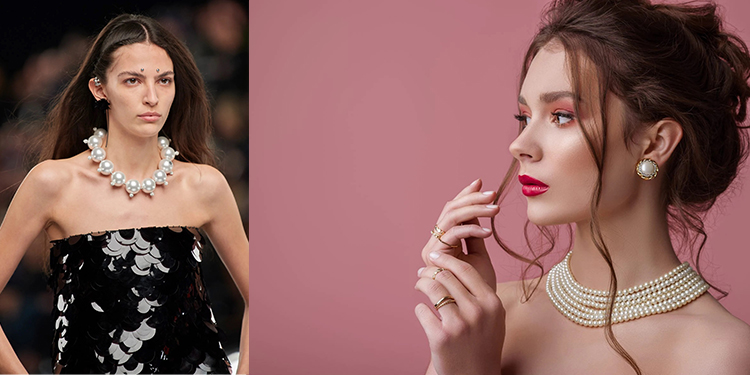
While classic pearl jewelry is timeless, it's also good to be aware of current trends and styles in the world of pearl jewelry. This can give you inspiration and ideas for incorporating pearls into your jewelry collection in new and exciting ways.
Classic styles of pearls include:
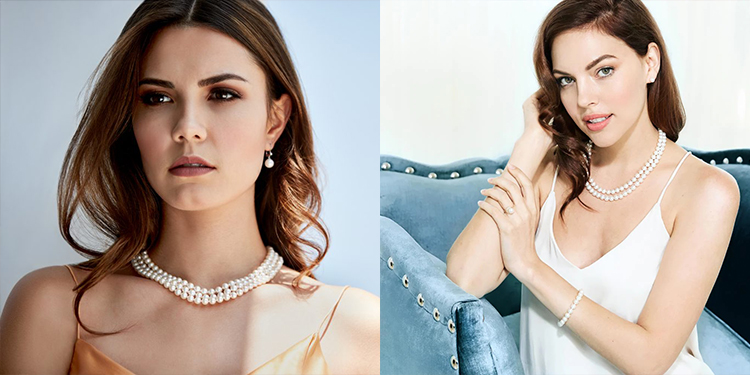
Strand Necklaces: A strand of pearls is a timeless piece of jewelry that can be worn alone or layered with other necklaces.
Stud Earrings: Simple and elegant, pearl stud earrings are a classic choice that can be dressed up or down.
Bracelets: A pearl bracelet is a sophisticated and elegant accessory that can be worn alone or paired with other bracelets.
Brooches: Pearl brooches can be worn to add a touch of elegance to a jacket, sweater, or bag.
Rings: A pearl ring is a delicate and refined accessory that can be worn on its own or stacked with other rings.
Current trends in pearls include:
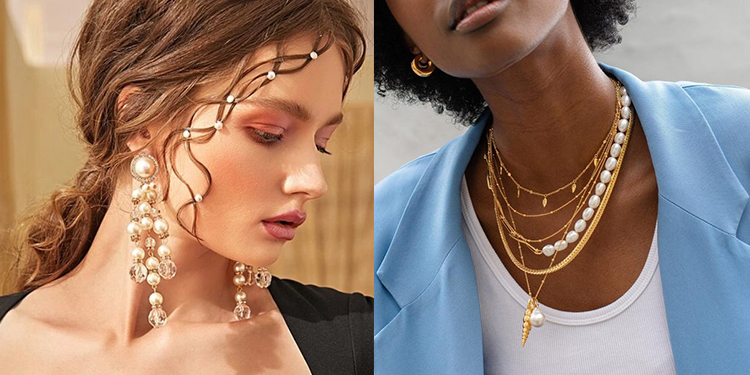
Mixed Metals: Combining different metal types and textures, such as gold and silver, is popular in pearl jewelry.
Bold Designs: Large and bold pearl jewelry pieces, such as statement necklaces and earrings, are gaining popularity.
Colored Pearls: Colored pearls in shades of pink, gold, and black are becoming increasingly popular, in addition to traditional white pearls.
Irregular Shapes: Irregularly shaped pearls, such as baroque pearls, are a unique and trendy way to incorporate pearls into your jewelry collection.
Layered Looks: Layered pearl necklaces and bracelets are a popular way to wear multiple pieces of pearl jewelry at once, creating a chic and modern look.
Combining classic styles with current trends allows you to create a unique and personalized pearl jewelry collection that reflects your personal style.
Customization
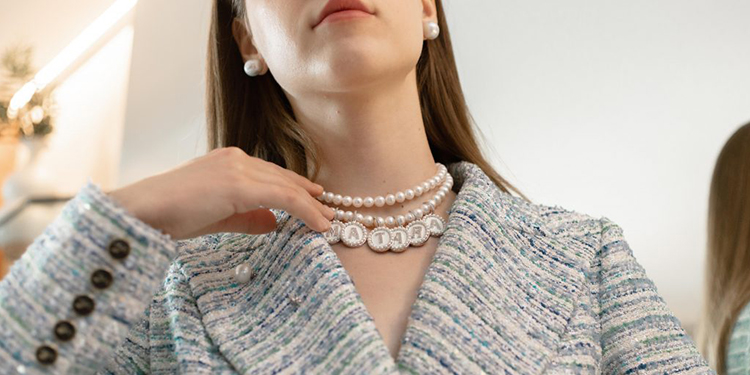
Customizing your pearl jewelry allows you to personalize your pieces to match your style and preferences. Some customization options to consider include the following:
Pearl Size: Choose the size of the pearls that best suits your style and preferences. Some common pearl sizes include 7.5-8mm, 8-8.5mm, and 9-9.5mm.
Pearl Shape: Choose the shape of the pearls you prefer, such as round, oval, button, or baroque.
Pearl Color: Select the color of the pearls that best complements your skin tone and personal style. Some popular pearl colors include white, cream, black, and golden.
Clasp Design: Choose a clasp design that complements the style of your pearl jewelry and enhances its overall appearance.
Length: Customize the length of your pearl necklace or bracelet to ensure a comfortable and flattering fit.
Metal Type: Select the metal you prefer for your clasp and findings, such as white gold, yellow gold, rose gold, or sterling silver.
By customizing your pearl jewelry, you can create unique and personalized pieces that are tailored to your style and preferences. This can make your jewelry more memorable and meaningful and increase its overall value.
Ethical Sourcing

It is important to consider the source of the pearls when purchasing pearl jewelry. Ethical and sustainable sourcing practices ensure that the environment and communities are protected and can help to conserve the pearl-producing species and their habitats. When buying pearls, look for retailers that:
Use cultured pearls: Cultured pearls are grown in a controlled environment and are a more sustainable and ethical alternative to wild-harvested pearls.
Source from responsible farms: Look for pearls that are sourced from farms that use sustainable practices and provide fair working conditions for their employees.
Use traceable supply chains: Retailers should be transparent about the source of their pearls and be able to trace them back to the farm where they were grown.
Follow environmental regulations: Responsible retailers should follow local, national, and international environmental regulations to minimize the impact of their operations on the environment.
By supporting retailers that prioritize ethical and sustainable sourcing, you can help to protect the environment and communities and ensure that the pearls you purchase are of the highest quality.
Versatility

When buying pearl jewelry, versatility is an important factor to consider. Having pieces that can be worn with a variety of outfits and styles can make your jewelry collection more versatile and increase its value. When looking for versatile pearl jewelry, consider the following factors:
Classic Designs: Timeless designs, such as a simple strand of pearls or stud earrings, are versatile choices that can be dressed up or down and worn with various outfits.
Neutral Colors: Pearl jewelry in neutral colors, such as white, cream, and black, is more versatile than jewelry in bold or bright colors. Neutral pearls can be paired with a broader range of outfits and styles.
Adjustable Lengths: Pieces with adjustable lengths, such as necklaces with extenders or bracelets with clasps, can be worn with a variety of necklines and wrist sizes, making them more versatile.
Versatile Shapes: Choose pearls with versatile shapes, such as round, oval, or button, as they are more adaptable than irregularly shaped pearls.
Mix-and-Match Pieces: Consider purchasing a mix-and-match set of pearls, such as a necklace and earring set, that can be worn together or as separate pieces.
By choosing versatile pieces and considering these factors, you can create a versatile pearl jewelry collection that can be worn with various outfits and styles. This will ensure that your jewelry will never go out of style and will always be a valuable addition to your wardrobe.
Preservation
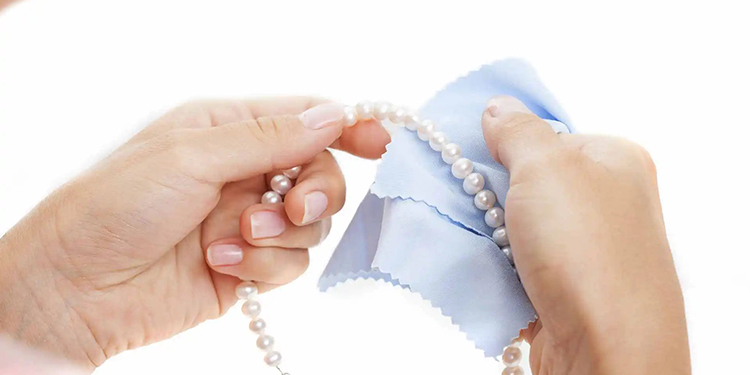
To ensure that your pearl jewelry remains in top condition for years to come, it's important to store it properly. A jewelry box or pouch lined with a soft material such as velvet or silk is ideal for preventing scratches and damage to your pearls. This will protect them from any potential damage caused by contact with more complex surfaces.
It is also essential to be mindful of the environment in which your pearl jewelry is stored. Avoid exposing it to harsh chemicals, such as hairspray, perfume, or cleaning products, as these can dull or damage the pearls. Additionally, store your pearl jewelry separately from other jewelry to prevent tangling or scratching.
Aside from proper storage, handling your pearl jewelry with care is also important. Avoid wearing it when it is subjected to rough treatment or extreme temperatures. Additionally, direct exposure to sunlight can cause the pearls to fade or yellow, so it is recommended to store your pearl jewelry in a cool and dark place when not in use.
In addition to proper storage and handling, regular cleaning and maintenance is also important for keeping your pearl jewelry in top condition. A simple solution of mild soap and warm water can be used to clean the pearls gently, and a soft cloth can be used to dry them. It is also recommended to have your pearl jewelry inspected by a professional regularly to ensure that it is in good condition and to have any necessary repairs or restringing done.
By storing, handling, and maintaining your pearl jewelry properly, you can ensure that it remains in top condition for many years to come, bringing you joy and beauty for generations to come.
Education

There are numerous ways to learn about pearl jewelry products and make informed decisions when purchasing them. Online courses and educational resources offer comprehensive information about pearls and jewelry and can be a great starting point for anyone interested in learning about this fascinating topic. Social media platforms, such as Instagram, Pinterest, and Facebook, provide a wealth of information and resources about pearls and jewelry and offer the opportunity to connect with experts and other enthusiasts.
Consulting with experts such as jewelers or gemologists can also be extremely helpful when purchasing pearl jewelry. These people are very knowledgeable and experienced in this field. They can provide valuable insights into the quality, value, and care of pearls and recommend purchasing options.
In addition to these online and in-person resources, online forums and communities dedicated to pearls and jewelry provide an opportunity to connect with people who have purchased and used pearl jewelry products, ask questions, and gather information. Finally, numerous books and magazines on pearls and jewelry offer in-depth information and insights into pearls' history, production, and value.
It's essential to gather information from multiple sources and verify the source's credibility to ensure that the information is accurate and trustworthy. By learning about pearl jewelry products, you can make informed decisions and find the perfect piece that meets your needs and preferences.
In conclusion, buying pearl jewelry involves considering various factors such as the type, quality of pearl, setting, and cost. Additionally, taking care of your pearl jewelry by storing it correctly, avoiding harsh chemicals, and regular cleaning and maintenance will help to ensure its longevity. By considering these factors and doing your research, you can make a more informed and confident decision when purchasing pearl jewelry, ensuring that you get a piece you will cherish and enjoy for years to come.


Leave a Comment